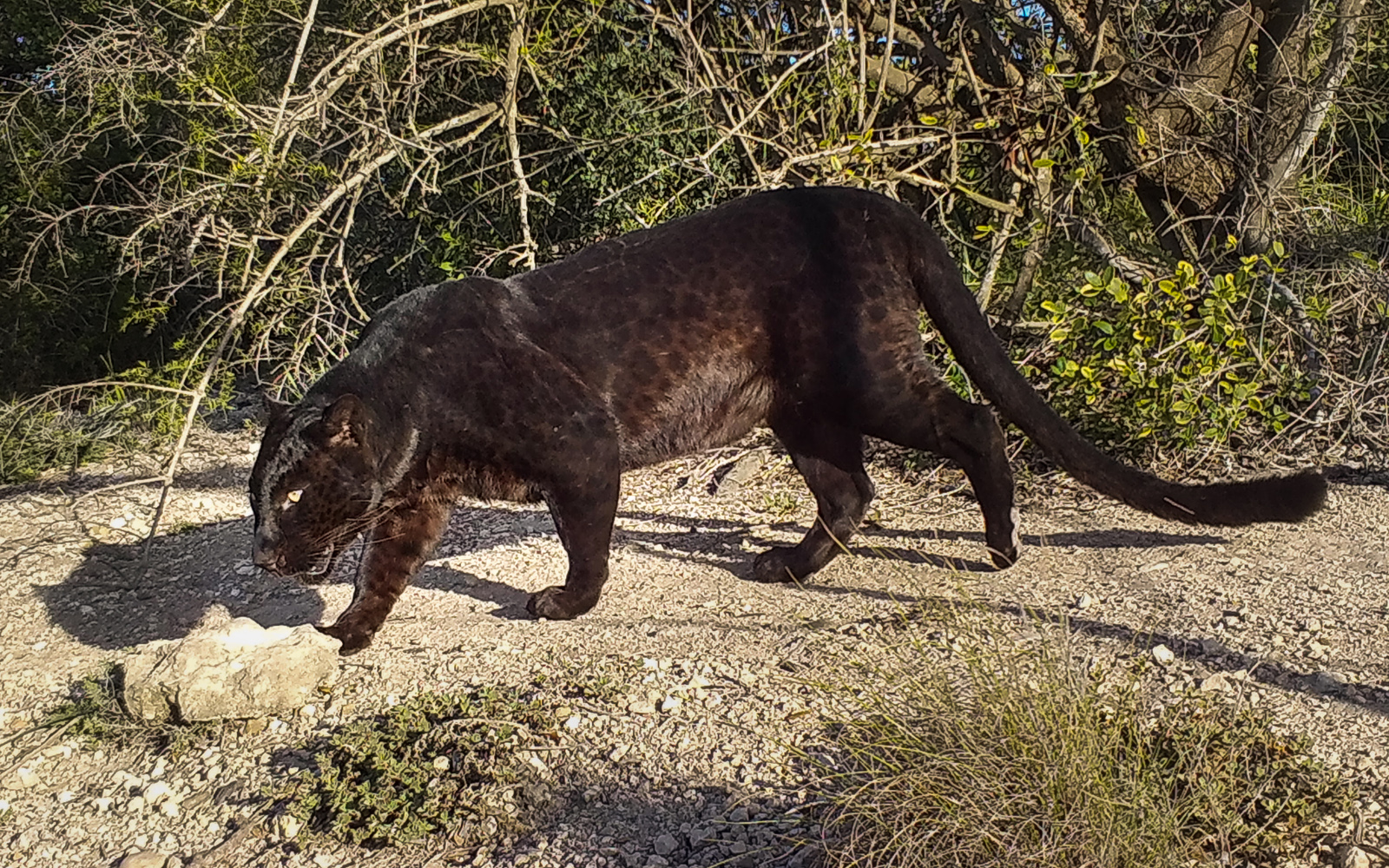The creepy five
31 October 2022
THE CREEPY FIVE
You’ve heard of The Big Five and The Small Five. Now Charlie Baker introduces her top five ‘creepy’ creatures doing the ‘dirty’ jobs this Halloween.

Image: Mowgli, a rare melanistic leopard, or black panther.

Charlie Baker
Halloween is all about the spooky and strange. Many animals are associated to Halloween, often due to their diet or habits, which we perceive as disgusting or menacing. But do these animals deserve their ‘scary’ or ‘gross’ reputations?
Black Panthers
The domestic black cat is synonymous with Halloween, with many believing they bring bad luck. Black panthers are black cats on a much larger scale! The term is used to describe rare melanistic leopards and jaguars. Mowgli, rescued from a failed zoo in South Africa and now living peacefully at our Rescue Centre in Shamwari, is a melanistic leopard. Look closely and you can still see his beautiful rosette markings, despite having darker fur!
Both leopards and jaguars are incredibly important to the ecosystems in which they live. Feasting on weak or injured prey helps to keep herds of herbivores healthy. The mere presence of these top predators also ensures that herbivores move on to different areas, preventing overgrazing and soil erosion.
Millipedes
Invertebrates of all kinds shoulder the label of ‘creepy crawlies’, but I propose they are not so much creepy as crucial to our very survival. Millipedes have been running the planet’s waste disposal system for the past 420 million years. Known as detritovores, millipedes eat dead and decaying plant matter, breaking it down further into organic material and releasing nutrients back into the soil. Millipedes are essential for soil health and without them, wild vegetation and even our own crops would struggle to grow.
Bats
Far from their spooky reputation, bats of all shapes and sizes around the world play vital roles to keep habitats healthy. Insectivorous species help control the number of insects by eating their bodyweight of these creatures every single night, reducing our reliance on harmful pesticides and increasing crop yield. Fruit bats, or flying foxes, spread seeds far and wide in their guano (or dung) promoting forest growth in new areas. As well as this, some species are sole pollinators of many tropical plants and their flowers – without the bats, these plants would disappear.
Vultures
These large carnivorous birds are scavengers and eat the dead remains of other animals. Whilst vulture’s eating habits might sound disgusting, they are in fact nature’s cleaners, helping keep the environment healthy for other animals by removing deadly toxins and disease.
Hyena
With their bone-chilling laughing call, it’s no wonder spotted hyena have often been described as sly, ugly or vile. In fact, folklore tells of witches that could morph between human and hyena – something right out of a ghost story. Yet these creatures are highly intelligent and sociable animals. Living in large clans, they work together to hunt prey, as well as scavenge. Much like black panthers and vultures, hyena keep the ecosystem healthy by keeping herbivores on the move and eating the remains of animals and disease-spreading carcasses.
This Halloween, be an advocate for all those ‘scary’ and ‘disgusting’ creatures. Without them, the world would be a very scary place indeed!
